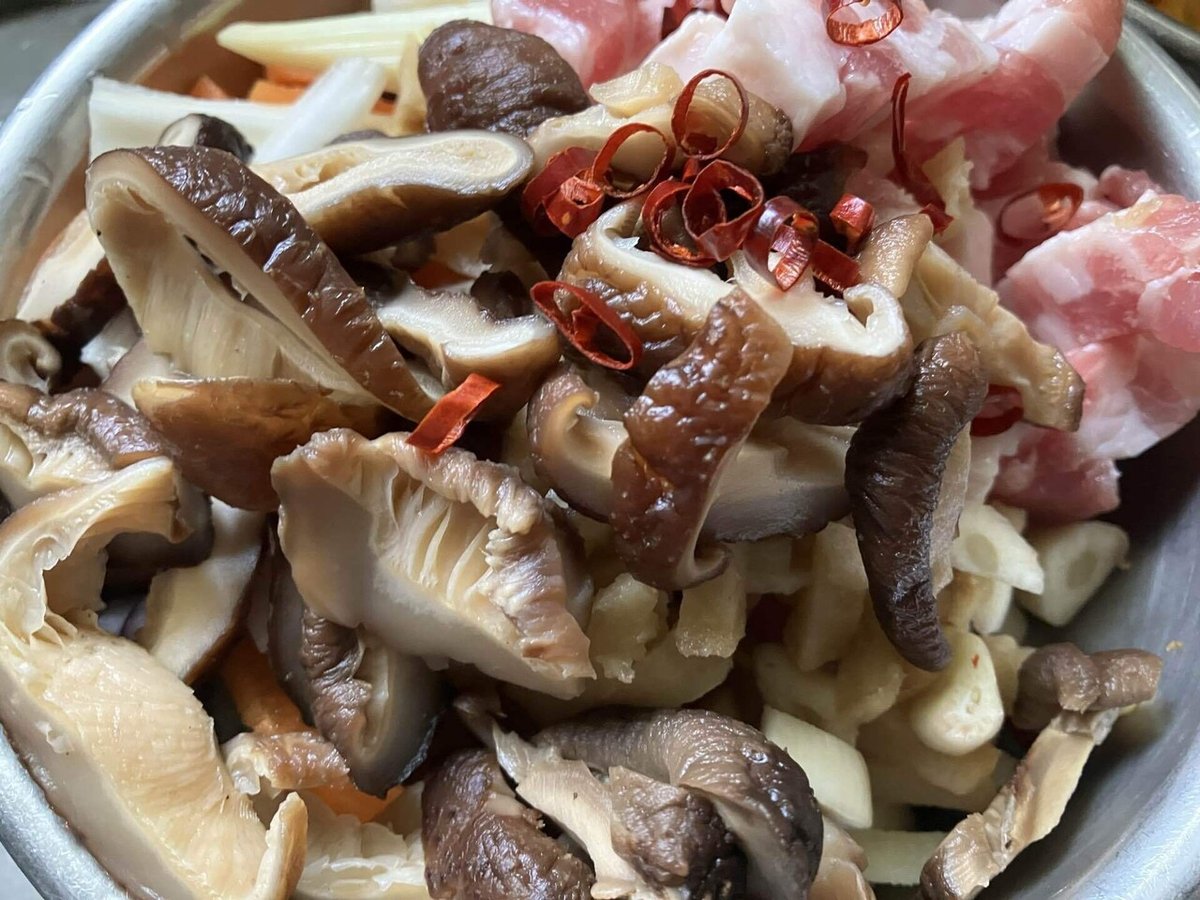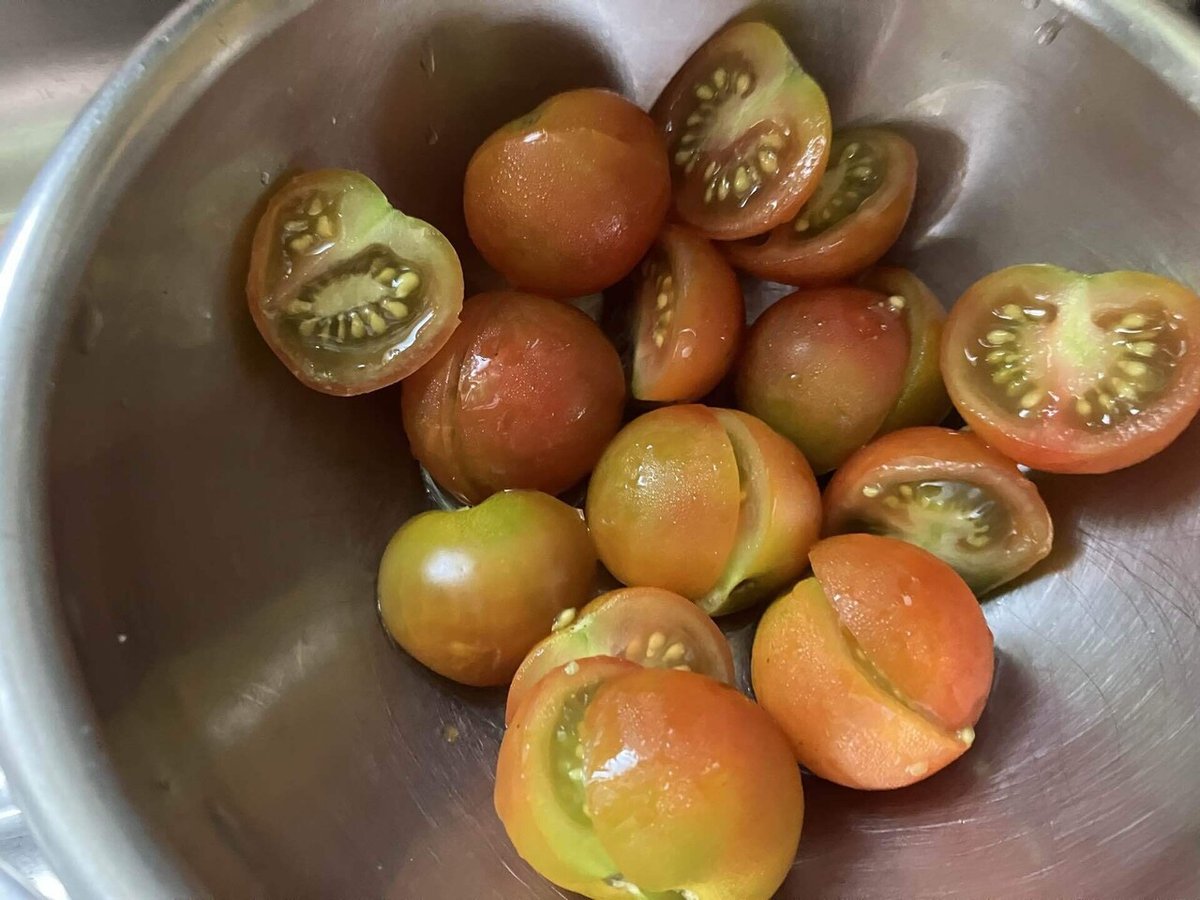
台湾のお母さん直伝、家庭料理の塩焼きそば「炒麵 chaomian」「炒米粉 chaomimian」「炒冬粉 dongfen」 Taiwanese mothers teach home-cooked salted fried noodles: "chaomian," "chaomimian," and "dongfen":おまかせ小品集 Chef's choice dishes collection
深夜食堂(ドラマの深夜食堂よりずっと前のお話)」でお出しした料理の小品集。材料がある限り何でも出してました。ほとんど即興だったので何百種類も作りましたが、お客様のエピソードを思い出せるものを少しづつ再現します(差し支えある話は多少脚色しています)。
A collection of small dishes served on "Midnight Diner" (a story that took place long before the TV drama "Midnight Diner"). We served anything as long as we had the ingredients. Since it was mostly improvisation, we made hundreds of dishes, but we will recreate little by little the ones that remind us of our customers' episodes (we have dramatized some of the more inappropriate stories).
おまかせの時間
The inspiration for the recipe
僕は、焼きそばの「お任せ」を頼まれた時は、これしか作らない。僕が食べてきた焼きそばの中では、このレシピが一番美味しかったからだ。僕個人としては、今でも、専門店のものも含め、これ以上の焼きそばにはお目にかかったことがない。僕は、ソース焼きそばとかあんかけ焼きそばとか、お客さんから具体的なリクエストがあれば、なんでも作るが、「お任せ」の場合は、この一皿限定だ。もう、30年以上前の話。小田原の街にITの仕事で毎週のように通っていた時期がある。小田原駅への帰り道の繁華街に、必ず寄っていた「スナック」があった。「スナック」とは言っても、カラオケもなく、カウンターだけの小さなお店だった。40代だったのだろうか、台湾出身のお母さんが一人で、その店を切り盛りしていた。仕事で台湾に頻繁に行っていた僕にとっては、快活で話好きな彼女から台湾の話を聞くのが楽しかった。特にメニューも無かったその店で、彼女の作る台湾家庭料理は、どれもとびきり美味しかった。彼女は料理の天才で、有り合わせの季節の材料で、何でも作ってくれた。それも、スナックの家庭用グリルと小さな冷蔵庫だけの設備で、化学合成系の調味料などには一切頼らず、魔法のように、僕が飽きないように工夫した料理を出してくれた。しかも目の前で隠しもせずに、作り方の解説もしてくれた。1年ほど通っただろうか。僕の中華料理スキルは、この人に育ててもらったようなものだ。不幸なことに彼女は、僕が出会った直後、脳の病に犯された。僕が行くと顔や僕の好みは思い出せるけど、名前や前回出した具体的な料理が思い出せないのだ。それでも、料理の腕は落ちなかった。前向きな彼女は、お客さんの名前と前回作った料理を、メモ帳に詳細に書き込み、笑顔で対応してくれた。ある日、お客さんが誰もいなくなって看板を下ろした後、彼女が初めてさめざめと泣いた。「病気が進行して、お店を閉めるかも知れない。常連さんと会えなくなるのが悲しい!」と涙目で声を詰まらせていた。翌週訪れた時は、彼女の日本人の旦那さんの貼り紙が掲げられていた。彼女とは、それで永久のお別れになってしまった。帰り道の繁華街のネオンが滲んで見えた。
When I'm asked to make a "chef's choice" yakisoba, I only make this recipe. Because this is the most delicious yakisoba I've ever eaten. Personally, I've never seen a better yakisoba, even at specialty restaurants. I'll make anything if the customer specifically requests it, like yakisoba with sauce or yakisoba with thickened sauce, but when it's "chef's choice," I limit myself to this one dish. This happened more than 30 years ago. There was a time when I used to go to Odawara almost every week for my IT job. On the way back to Odawara Station, there was a "snack bar" that I always stopped by in the downtown area. Even though it was a "snack bar," it was a small shop with no karaoke and only a counter. A mother from Taiwan, who must have been in her 40s, was running the bar by herself. I often went to Taiwan for work, so I enjoyed listening to her stories about Taiwan. The Taiwanese home cooking she made at the bar, which didn't have a menu, was all extremely delicious. She was a cooking genius, and she would make anything with whatever seasonal ingredients were on hand. With only a snack bar's household grill and a small refrigerator, she didn't rely on synthetic seasonings at all, and magically made dishes that I would never tire of. Moreover, she explained how to make them without hiding them in front of me. I went there for about a year. My Chinese cooking skills were nurtured by this person. Unfortunately, she was struck by a brain disease right after we met. When I go there, she can remember my face and my preferences, but she can't remember my name or the specific dishes she served last time. Even so, her cooking skills did not decline. She was positive, and wrote down the names of customers and the dishes she made last time in detail on a notepad, and served them with a smile. One day, after all the customers had left and the sign was taken down, she cried for the first time. "My illness is getting worse, so I might have to close the shop. I'm sad that I won't be able to see my regular customers anymore!" she said, her eyes teary and her voice choked up. When I visited the following week, there was a sign from her Japanese husband hanging up. That was my final goodbye to her. On my way home, the neon lights of the downtown area looked blurred.
これは、彼女に夏に作ってもらった、塩味のシンプルな焼きそば。名柄は覚えていないが、彼女は、台湾の平打ちの乾麺を使っていた。材料は本当に有り合わせで、トマトだったり、茄子だったり、胡瓜だったり、ニラだったり、旬の野菜を使うのが彼女は上手かった。僕の深夜食堂は持ち込み自由だったので、夏には家庭菜園の成果物が手に入る。お客さんが持ってきた夏野菜と僕が常備している乾物素材を使った一皿。彼女は、このレシピで、中華平打ち麺以外にも、麺を米粉麺(ビーフン)、冬粉麺(春雨)に置き換えた焼きそばも作ってくれた。だから、グルテンフリーが必要な人でも楽しめる。肉は何を使っても良いが、ここでは、以前の記事にレシピのある塩豚を使った。
This is a simple salty fried noodle dish that she made for me in the summer. I don't remember the name, but she used flat, dried noodles from Taiwan. The ingredients were really whatever she had on hand, and she was good at using seasonal vegetables like tomatoes, eggplants, cucumbers, and Chinese chives. My Midnight Diner allowed me to bring in whatever I wanted, so in the summer I could get the fruits of my home garden. This dish uses summer vegetables brought by customers and dried ingredients that I always have on hand. In addition to using Chinese flat noodles, she also made fried noodles using rice flour noodles (bifun) and winter flour noodles (harusame) using this recipe. So even people who need gluten-free can enjoy it. You can use any meat, but here I used salted pork, whose recipe is in a previous post.
Today's Ingredients:
今日の素材:
中華乾麺(平打ち麺。ビーフンや春雨に置き換えても良い)
手に入った夏野菜※
塩豚(レシピは前の記事を参照。好きな肉で良い)
乾燥椎茸
生姜
にんにく
オイスターソース
自然塩
胡椒
唐辛子
酸化しにくい油
※ここでは、玉葱、セロリ、人参、苦瓜、ピーマンを使っているが、季節野菜なら何でも良い。
Chinese dried noodles (flat noodles)
Summer vegetables you can find
Salted pork (see previous article for recipe. Use any meat you like)
Dried shiitake mushrooms
Ginger
Garlic
Oyster sauce
Sea salt
Pepper
Chili pepper
Oil that does not oxidize easily
*I use onion, celery, carrot, bitter melon, and bell pepper here, but any seasonal vegetables will do.
procedure:
つくり方:
乾燥椎茸は水かぬるま湯で戻して、切り分けておく。戻し汁は残しておく。
生姜とにんにくは細かく刻んでおく。
野菜は一口大に切り分けておく。
塩豚は小さく刻んでおく。
鍋にお湯を沸かして、中華乾麺を茹でる。
フライパンないし中華鍋に油を強火で熱し、生姜、にんにく、唐辛子、玉葱や人参など硬めの野菜を入れて、炒める。生姜やにんにくの香りが立ってきたら、トマト以外の他の野菜を入れて、塩胡椒して、炒める。
トマトと椎茸の戻し汁、オイスターソース、水を入れて、野菜が柔らかくなって、トマトが煮崩れ始めるまで、炒め煮する。水分が、まだ底に少し溜まっているくらいが、ちょうど良い。
そこに茹でた麺をほぐし入れ、底に溜まったスープを吸わせるように、よくかき混ぜる。麺が十分に素材の旨味を含んだスープを吸い込んだら、最後に塩味を調節する。
Rehydrate the dried shiitake mushrooms in cold or lukewarm water and cut them into pieces. Reserve the soaking water. Finely chop the ginger and garlic. Cut the vegetables into bite-sized pieces. Chop the salted pork into small pieces. Bring a pot of water to a boil and boil the Chinese dried noodles. Heat oil in a frying pan or wok over high heat and add the ginger, garlic, chili peppers, and harder vegetables such as onions and carrots, and stir-fry. When the aroma of the ginger and garlic comes out, add the other vegetables except the tomatoes, season with salt and pepper, and continue to stir-fry. Add the soaking water from the tomatoes and shiitake mushrooms, oyster sauce, and water, and stir-fry until the vegetables are soft and the tomatoes start to fall apart. It's best if there is still a little water at the bottom. Loosen up the boiled noodles and add them, and stir-fry well so that they absorb the soup that has accumulated at the bottom. Once the noodles have absorbed the soup, which is full of the flavor of the ingredients, adjust the saltiness at the end.












ヒントとバリエーション
Recipe tips and variation
「台湾式焼きそば」のポイントは、麺がたっぷり素材の旨味を吸い込むところにある。日本の焼きそばのように、スパイシーに香ばしく炒めるのとは対極のやり方。彼女に言わせると、日本の焼きそばはスナックとして食べるインスタント麺のように、台湾人にはパサパサして塩辛すぎて、落ち着く味ではないのだそうだ。いかにも、旨みのあるスープ(湯)を大切にする台湾料理の好みが出ている。日本式焼きそばには旨味がないので、ソースや化学系調味料を振りかけないと味が出ない。これに対し、台湾式焼きそばでは、麺に染み込むスープには十分に旨味があるので、化学系調味料は蛇足となる。どっちが美味しいかではなく、こういうところに食文化による好みの違いが出る。台湾の優しいお母さんの味だ。
The key to "Taiwanese fried noodles" is that the noodles absorb a lot of the flavor of the ingredients. It is the polar opposite of the spicy, fragrant stir-frying method of Japanese fried noodles. According to her, Japanese fried noodles are like instant noodles eaten as snacks, but for Taiwanese people they are too dry and salty, and do not have a soothing taste. This shows the preference of Taiwanese cuisine, which values umami soup (soup). Japanese fried noodles have no umami, so they do not have any flavor unless you sprinkle sauce or chemical seasonings on them. In contrast, with Taiwanese fried noodles, the soup that soaks into the noodles has plenty of umami, so chemical seasonings are unnecessary. It is not a matter of which is more delicious, but rather this is where the differences in preferences due to food culture come into play. It is the taste of a kind Taiwanese mother.
野菜は何を使っても良い。この季節は、他にも、皮をむいた胡瓜、茄子、空芯菜、ニラ、オクラ、ツルムラサキ、ツルナ、苦瓜、未成熟のヘチマ、未成熟パパイヤ、新じゃがいも、バジル、紫蘇などを使っても良い。苦瓜は、少し黄色苦熟しているが、これはこれで甘味があって美味しい。
乾燥椎茸の代わりに、キクラゲや他の茸を使っても良い。
肉は、お好きな肉を使って良いし、豆腐干などを使えば、ベジタリアン仕様にもできる。野菜の種類が多ければ、野菜だけでも十分な旨味が引き出せる。
麺にたっぷりの旨味スープを吸い込ませて、少し柔らかめに仕上げるのがコツだ。このやり方は、イタリアのパスタとも通づるものがある。
ビーフンや春雨を使う場合も同じ要領で良い。
Any vegetables are OK. Vegetables that can be used this season include peeled cucumbers, eggplants, water spinach, Chinese chives, okra, Indian spinach, Okinawa spinach, bitter melon, young loofah, young papaya, new potatoes, basil, and shiso. Bitter melon is slightly yellow and ripe, but it is still sweet and delicious.
You can also use mushrooms such as wood ear mushrooms instead of dried shiitake mushrooms.
You can use meat of your choice, and make it vegetarian by using half dried tofu. By using a variety of vegetables, you can bring out the flavor of the vegetables alone.
The trick is to let the noodles absorb the flavorful soup and finish them a little soft. This method is similar to Italian pasta.
The same method can be used with rice vermicelli and glass noodles.
Guide to where to get ingredients and equipment 材料と機材の入手先ガイド
※Amazonのアフェリエイトに参加しています。もしご購入の際はここからクリックしてご購入いただけると、コーヒー代の足しになるので、嬉しいです。ちなみに僕はコーヒー依存症です。
*I participate in Amazon affiliate programs. If you purchase this product by clicking here, it will help pay for my coffee, so I would be very happy. By the way, I am addicted to coffee.
この記事が気に入ったらサポートをしてみませんか?
